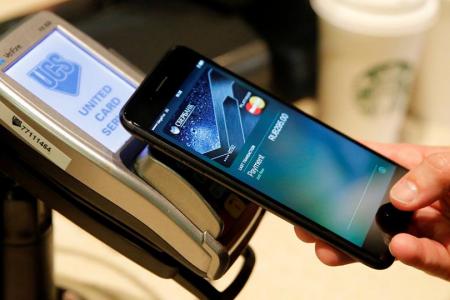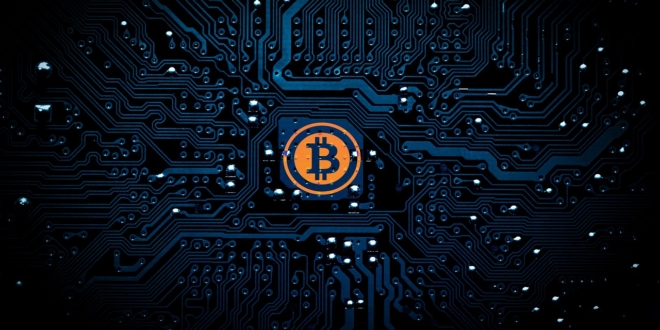Will consumers pay by bitcoin, blockchain technology, NFC, mobile app, IoT or some other new payment technology in the future? We’ve got a quick update on payments trends and predictions including mobile, contactless NFC, bitcoin, blockchain and other new payment technologies.
Debra Walton, CCO with Thomson Reuters predicts small firms will continue to be big disruptors in the payments industry. PPRO Group’s Ralf Ohlhausen shares 11 predictions in fintech and payments for 2017.
2017: Small firms will continue to be big disrupters
 There has been growing discussion over the past few years on the new transaction rails, and how the Internet has disrupted payments just like other industries. Unfortunately or fortunately, the payments industry is not that easy to disrupt. Every serious attempt that has managed to garner some scale has ended up either enabling the legacy infrastructure or leveraging the existing infrastructure, merely becoming another delivery channel for the last mile.
There has been growing discussion over the past few years on the new transaction rails, and how the Internet has disrupted payments just like other industries. Unfortunately or fortunately, the payments industry is not that easy to disrupt. Every serious attempt that has managed to garner some scale has ended up either enabling the legacy infrastructure or leveraging the existing infrastructure, merely becoming another delivery channel for the last mile.
The challenge legacy networks have is not one of efficacy or even adaptability but is rather similar to the world’s busiest and aging airports. They cannot afford to shut down for a day, let alone months. The only solution is to keep bolting on new capabilities to the existing infrastructure, which while ensuring continuity also comes with its own set of disadvantages. This is where the new rails have an advantage in terms of being able to leapfrog to new technologies. But getting payments right is not only difficult but also a long drawn out iterative process. Hence, the notion that some of the new rails will blaze the way forward is also misguided.
First came the Internet, then mobile devices and by extension the mobile Internet, and now the social media age is upon us in full fury. With every twist in this technology-ridden tale, weary-eyed entrepreneurs have dreamt of disrupting the world of payments and charting a brand new course to the holy grail of inexpensive, secure and ubiquitous payments. While clearly, there has been tremendous innovation with tangible benefits across the ecosystem, broadly stated there has not been any meaningful disruption but rather an enablement of the legacy establishment. Via bobsguide.com
PPRO Group 2017 Predictions: Fintech, e-Commerce and Payments
 Payment methods need to become more user-friendly to appeal to various platforms of commerce from the till point to online, taking differing devices into consideration in order to stay competitive.
Payment methods need to become more user-friendly to appeal to various platforms of commerce from the till point to online, taking differing devices into consideration in order to stay competitive.
This is especially important for providers of e-commerce payment methods who need to come up with optimised user experience and facilitate the growing trend of mobile payments. Brexit will be a huge topic for regulated FinTech’s in 2017. Via fintech.finance
5 Business Credit Card Trends to Watch for in 2017
 While there are many uncertainties for 2017, the credit card industry has typically been characterized by both stability and profitability. From the height of the last expansion to the depths of the Great Recession, banks have relied on their lines of business and personal credit cards for consistent profits.
While there are many uncertainties for 2017, the credit card industry has typically been characterized by both stability and profitability. From the height of the last expansion to the depths of the Great Recession, banks have relied on their lines of business and personal credit cards for consistent profits.
Nevertheless, the market for business credit cards continues to grow and evolve, and 2017 will not be any different. As 2016 comes to a close, here are five trends that I’m anticipating for the new year:
1. Increased Sign-Up Bonuses
When you have a product that nearly always makes a profit, you want to get it into the hands of as many users as possible. On the consumer side of the credit card market, the big story of 2016 was Chase’s Sapphire Reserve card, which debuted with a 100,000-point sign-up bonus. Demand was so strong that it generated mainstream media coverage and even resulted in a temporary shortage of cards Via nav.com
Five trends in payments next year
 According to research by Frost and Sullivan, South-east Asia is poised to become one of the world’s fastest-growing regions for e-commerce revenues, exceeding US$25 billion ($35.7 billion) by 2020.
According to research by Frost and Sullivan, South-east Asia is poised to become one of the world’s fastest-growing regions for e-commerce revenues, exceeding US$25 billion ($35.7 billion) by 2020.
Driven by unprecedented mobility, connectivity and computing power, today’s consumers expect payments to be fast and hassle-free.
As consumers continue to experiment with new ways to pay – mobile, online, using connected devices – demand for digital payment technologies will continue unabated in the coming year. Via tnp.sg
DIMOCO Unveils Top Five Trends in Carrier Billing for 2017
 DIMOCO, a leading payment institute for carrier billing, today announces the key trends slated to drive the carrier billing market in 2017. Carrier billing offers content owners and merchants the ability to do business with consumers that do not own a credit or debit card by offering them a reliable and simplified payment mechanism. It uses the pre-existing, trusted billing relationship with mobile carriers that enables consumers to make purchases through the operator’s billing system. DIMOCO enables almost 1 billion European subscribers to purchase goods and services from merchant and aggregators with their mobile phones.
DIMOCO, a leading payment institute for carrier billing, today announces the key trends slated to drive the carrier billing market in 2017. Carrier billing offers content owners and merchants the ability to do business with consumers that do not own a credit or debit card by offering them a reliable and simplified payment mechanism. It uses the pre-existing, trusted billing relationship with mobile carriers that enables consumers to make purchases through the operator’s billing system. DIMOCO enables almost 1 billion European subscribers to purchase goods and services from merchant and aggregators with their mobile phones.
The trends that will drive carrier billing market growth and adoption in 2017 include: rising digital content consumption; tech-savvy, always-connected consumers looking for better payment options; fflexible, new subscription models; new EU regulations and opportunities; and the rise of physical goods payments online. Via paymentweek.com
Blockchain, IoT and More: Five Major Trends in Payments in 2017
 Jeremy King, the international director of PCI Security Standards Council, laid out five major trends in payments in 2017 to look out for. Four of the five trends revealed by King involved Blockchain technology, with Internet of Things (IoT), Blockchain payments, tokenization and encryption included as major trends for next year.
Jeremy King, the international director of PCI Security Standards Council, laid out five major trends in payments in 2017 to look out for. Four of the five trends revealed by King involved Blockchain technology, with Internet of Things (IoT), Blockchain payments, tokenization and encryption included as major trends for next year.
Tokenization, Encryption, Blockchain Payments, IoT
According to King, five major trends will dominate the payment industry in 2017. The five trends are IoT, Blockchain, tokenization, encryption and mobile payments, all of which seems to involve Blockchain technology both directly and indirectly.
Encryption, Blockchain payments and IoT are three of the most obvious payment applications that will most likely heavily depend on Bitcoin’s underlying technology. Currently, there is a small range of applications or technologies that ensure strong encryption of financial data. Also, most IoT networks are beginning to be powered by Blockchain platforms due to their transparency, unprecedented security measures and real-time data settlement. Via cointelegraph.com
The Illusion of Payment Disruption
 There has been growing discussion over the past few years on the new transaction rails, and how the Internet has disrupted payments just like other industries. Unfortunately or fortunately, the payments industry is not that easy to disrupt. Every serious attempt that has managed to garner some scale has ended up either enabling the legacy infrastructure or leveraging the existing infrastructure, merely becoming another delivery channel for the last mile.
There has been growing discussion over the past few years on the new transaction rails, and how the Internet has disrupted payments just like other industries. Unfortunately or fortunately, the payments industry is not that easy to disrupt. Every serious attempt that has managed to garner some scale has ended up either enabling the legacy infrastructure or leveraging the existing infrastructure, merely becoming another delivery channel for the last mile.
The challenge legacy networks have is not one of efficacy or even adaptability but is rather similar to the world’s busiest and aging airports. They cannot afford to shut down for a day, let alone months. The only solution is to keep bolting on new capabilities to the existing infrastructure, which while ensuring continuity also comes with its own set of disadvantages. This is where the new rails have an advantage in terms of being able to leapfrog to new technologies. But getting payments right is not only difficult but also a long drawn out iterative process. Hence, the notion that some of the new rails will blaze the way forward is also misguided.
First came the Internet, then mobile devices and by extension the mobile Internet, and now the social media age is upon us in full fury. With every twist in this technology-ridden tale, weary-eyed entrepreneurs have dreamt of disrupting the world of payments and charting a brand new course to the holy grail of inexpensive, secure and ubiquitous payments. While clearly, there has been tremendous innovation with tangible benefits across the ecosystem, broadly stated there has not been any meaningful disruption but rather an enablement of the legacy establishment. Via letstalkpayments.com








LET’S CONNECT